
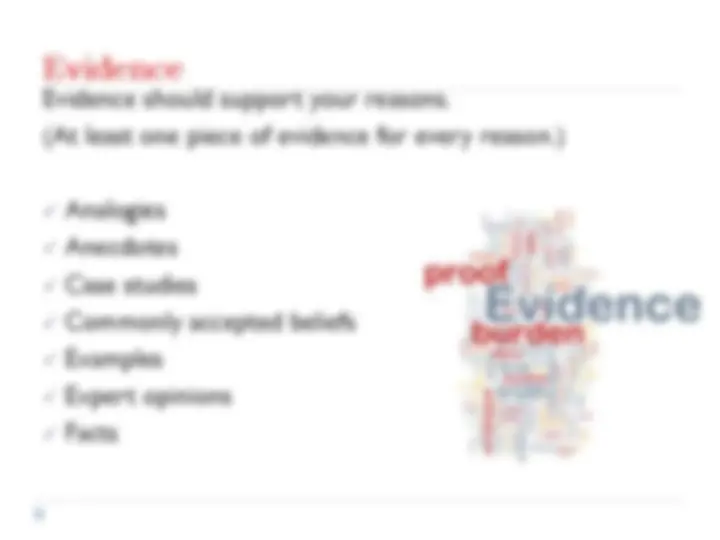
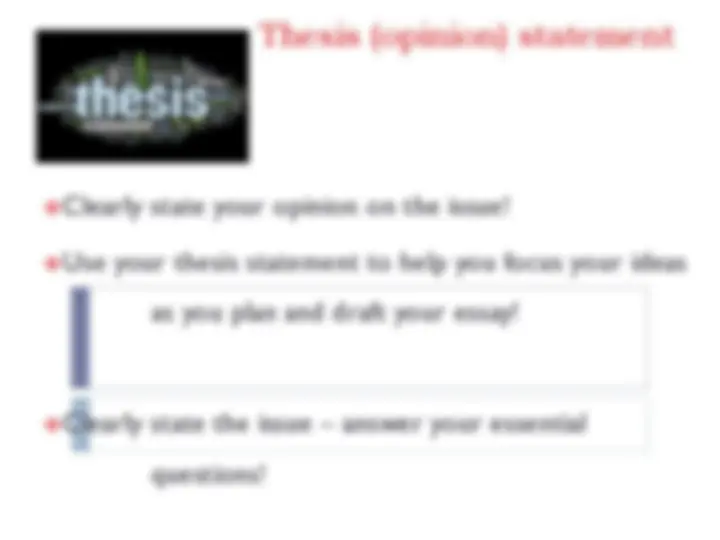

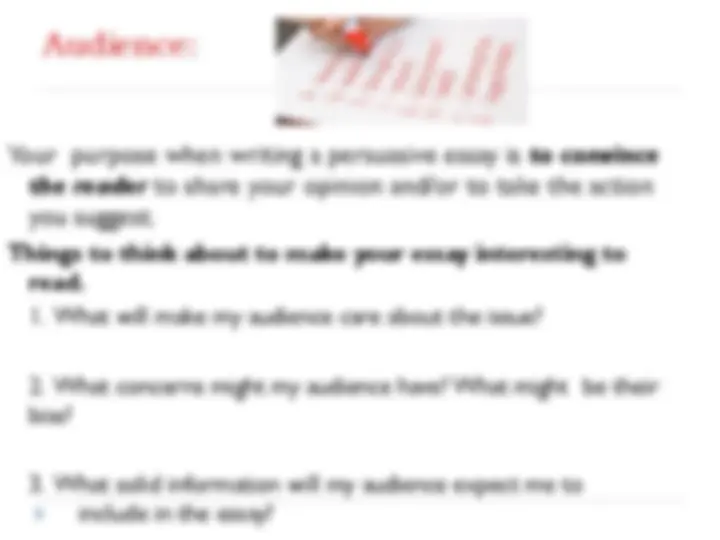
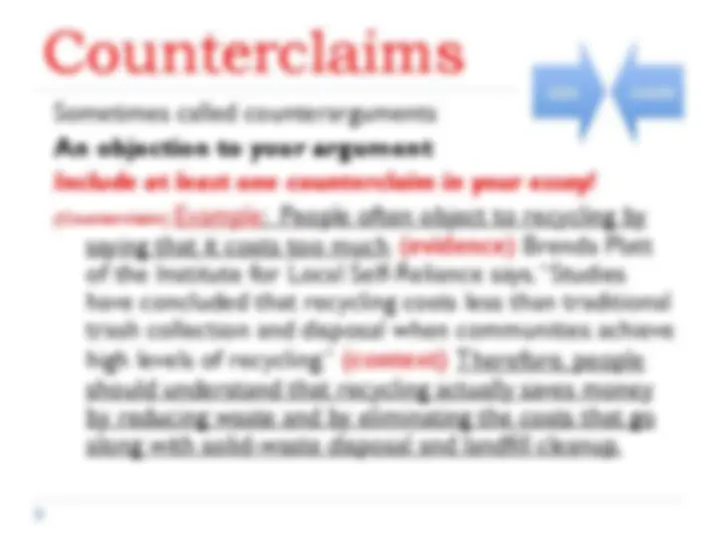
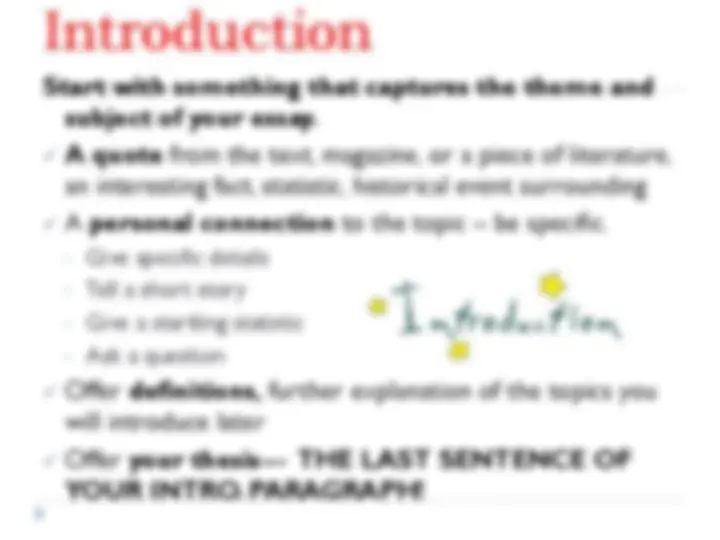


Study with the several resources on Docsity

Earn points by helping other students or get them with a premium plan


Prepare for your exams
Study with the several resources on Docsity

Earn points to download
Earn points by helping other students or get them with a premium plan
Community
Ask the community for help and clear up your study doubts
Discover the best universities in your country according to Docsity users
Free resources
Download our free guides on studying techniques, anxiety management strategies, and thesis advice from Docsity tutors
A step-by-step guide on how to write a persuasive essay, covering essential questions, research methods, evidence types, thesis statement, reasons, and audience engagement. Learn how to use logical, emotional, and ethical appeals, and how to handle counterclaims.
Typology: Study notes
1 / 12

This page cannot be seen from the preview
Don't miss anything!







Logical appeal (LOGOS)
speaks to readers’ commonsense and logic.
Emotional appeal (PATHOS)
speaks to readers’ hearts.
Ethical appeal (ETHOS)
speaks to readers’ sense of right and wrong.
When USING a quote, avoid using “says”. Instead try one of these:
Your purpose when writing a persuasive essay is to convince the reader to share your opinion and/or to take the action you suggest.
Things to think about to make your essay interesting to read.
Introduction
Start with something that captures the theme and subject of your essay.
A quote from the text, magazine, or a piece of literature, an interesting fact, statistic, historical event surrounding
A personal connection to the topic – be specific.
Offer definitions, further explanation of the topics you will introduce later
Offer your thesis--- THE LAST SENTENCE OF YOUR INTRO. PARAGRAPH!
Restate thesis
Explain final, concluding ideas ( briefly summarize your points/beliefs)
Offer brief concluding statement – what we should learn or do (call to action)
Offer personal insight , what you learned from this
Do not bring up a new topic